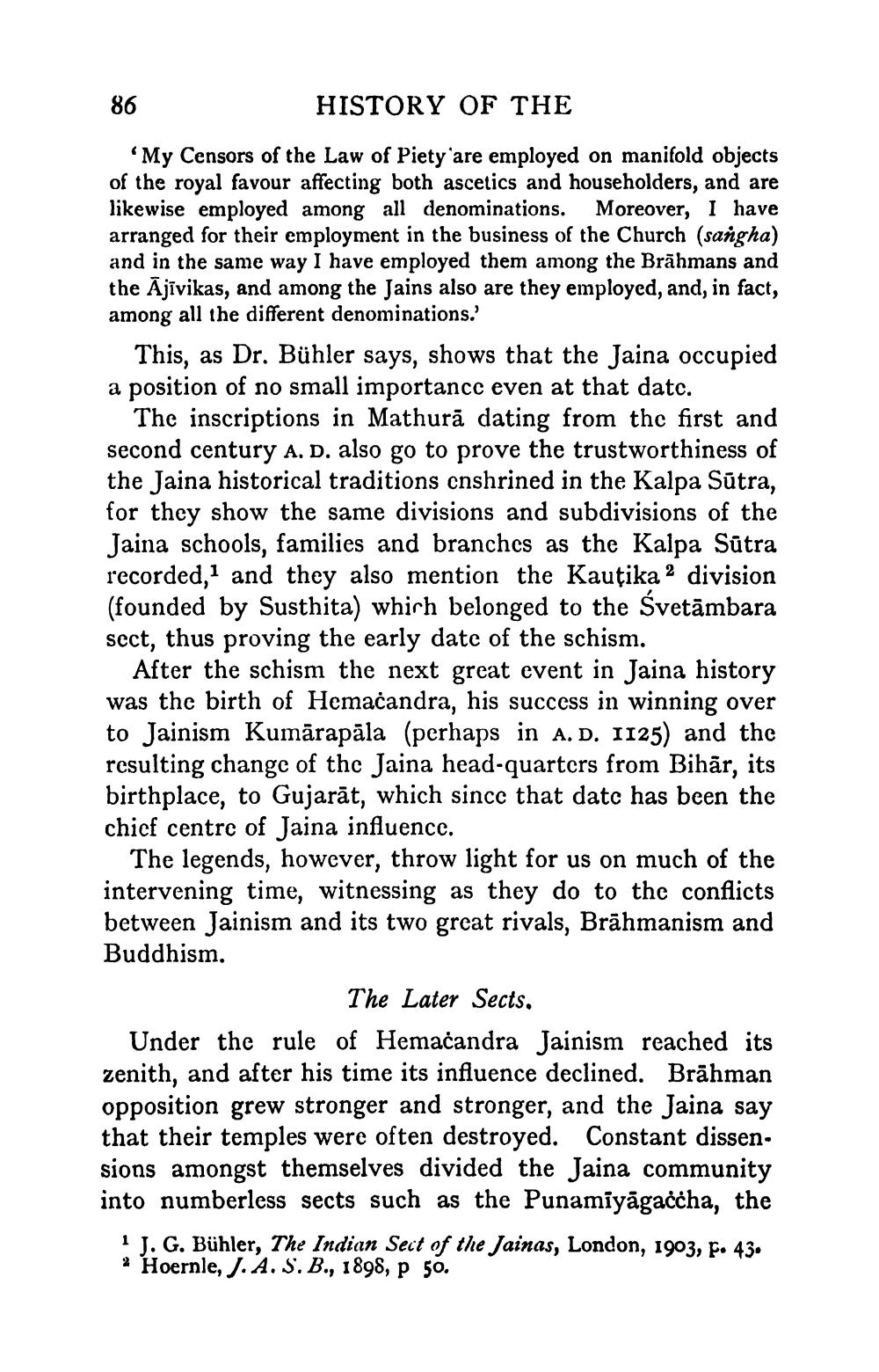________________
86
HISTORY OF THE
'My Censors of the Law of Piety are employed on manifold objects of the royal favour affecting both ascetics and householders, and are likewise employed among all denominations. Moreover, I have arranged for their employment in the business of the Church (sangha) and in the same way I have employed them among the Brahmans and the Ajivikas, and among the Jains also are they employed, and, in fact, among all the different denominations.'
This, as Dr. Bühler says, shows that the Jaina occupied a position of no small importance even at that date.
The inscriptions in Mathura dating from the first and second century A. D. also go to prove the trustworthiness of the Jaina historical traditions enshrined in the Kalpa Sūtra, for they show the same divisions and subdivisions of the Jaina schools, families and branches as the Kalpa Sūtra recorded,1 and they also mention the Kautika 2 division (founded by Susthita) which belonged to the Svetāmbara sect, thus proving the early date of the schism.
After the schism the next great event in Jaina history was the birth of Hemaċandra, his success in winning over to Jainism Kumārapāla (perhaps in A. D. 1125) and the resulting change of the Jaina head-quarters from Bihār, its birthplace, to Gujarat, which since that date has been the chief centre of Jaina influence.
The legends, however, throw light for us on much of the intervening time, witnessing as they do to the conflicts between Jainism and its two great rivals, Brahmanism and Buddhism.
The Later Sects.
Under the rule of Hemaċandra Jainism reached its zenith, and after his time its influence declined. Brahman opposition grew stronger and stronger, and the Jaina say that their temples were often destroyed. Constant dissensions amongst themselves divided the Jaina community into numberless sects such as the Punamiyāgaċċha, the
1 J. G. Bühler, The Indian Sect of the Jainas, London, 1903, p. 43. 2 Hoernle, J. A. S. B., 1898, p 50.




